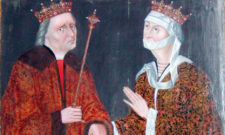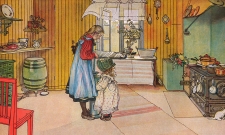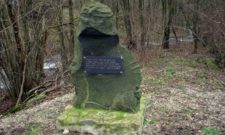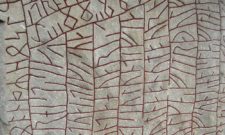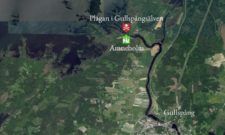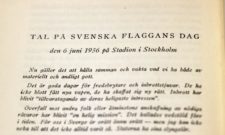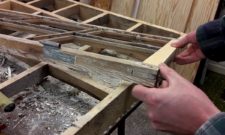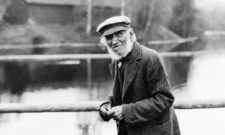At dawn on Thursday 12 October 1542, fire and death came to the village of Haddorp in Slaka parish, Östergötland. The memory lives on of the 300 peasants who gave their lives in the fight for their freedom, rights and faith.
Just over a month earlier, in mid-September, the Battle of Kisa took place - a crushing defeat for King Gustav Vasa and his troops. It was also the signal for a general uprising in northern Småland, and shortly afterwards the peasants in Östergötland followed suit.
But when Östergötland "hung on a thread of silk", as Gustav Vasa himself wrote in a letter, a clash occurred that did not turn out well for the peasants. After the Battle of Kisa, Dacke's forces were on their way to Linköping. They camped at Skeda and Slaka parishes with 300 men and were to stay overnight at the village of Haddorp with the farmer Olof Håkansson, in the westernmost part of Slaka parish. They thought they were safe, and perhaps relaxed more than they should have.
The Dawn of 12 October 1542 was fatal for Dacke's men. The royal troops, under the command of Botvid Larsson, were on their trail and early in the morning the sleeping peasants in and around Haddorp village were attacked. Houses and barns were set on fire. Dackes men were beaten, shot or burned to death. All 300 are said to have died.
With this success Botvid Larsson and his people really got a cruel revenge for the setback at Kisa. The element of revenge was not diminished by the fact that the "burned and beaten" in Haddorp were people from Kisa and Ydre, districts that had played a leading role in the Kisa battle.
But this massacre did not mark a turning point in the uprising, according to Lars-Olof Larsson. Instead, the scales tipped in favour of the rebellious Ostrogoths and Northern Danes who had entrenched themselves in Skeda parish, and were soon reinforced by Nils Dacke himself who came from the south with considerable forces.
The wind was at the allmogen's back. King Gustav Vasa wanted to negotiate - to buy time.
After the Dacke Rebellion failed, Olof Håkansson's farm in Haddorp was confiscated by the crown, and the old farming village was eventually transformed into Haddorp Manor, which still exists today. Sweden's first archaeologist was born there in 1630 Johan Hadorph, who participated in the first scientific excavation of Birka on Björkö. During the 19th century, agricultural schools were run on the property. Today the farm is owned and run by two brothers named Lennart and Ola Secher. Their grandfather bought the farm in 1912.
Sources
Larsson, Lars-Olof, Dackeland (1979)
Getting there
Coordinates: Latitude 58.37387573290986 | Longitude 15.500636100769043
Discover more interesting places to visit at History map.
Subscribe to YouTube:
If you appreciate Allmogens independent work to portray our fine Swedish history and Nordic culture, you are welcome to buy something nice in the shop or support us with a voluntary donation. Thank you in advance!
Support Allmogens via Swish: 123 258 97 29
Support Allmogens by becoming a member
Support Allmogens in your will


